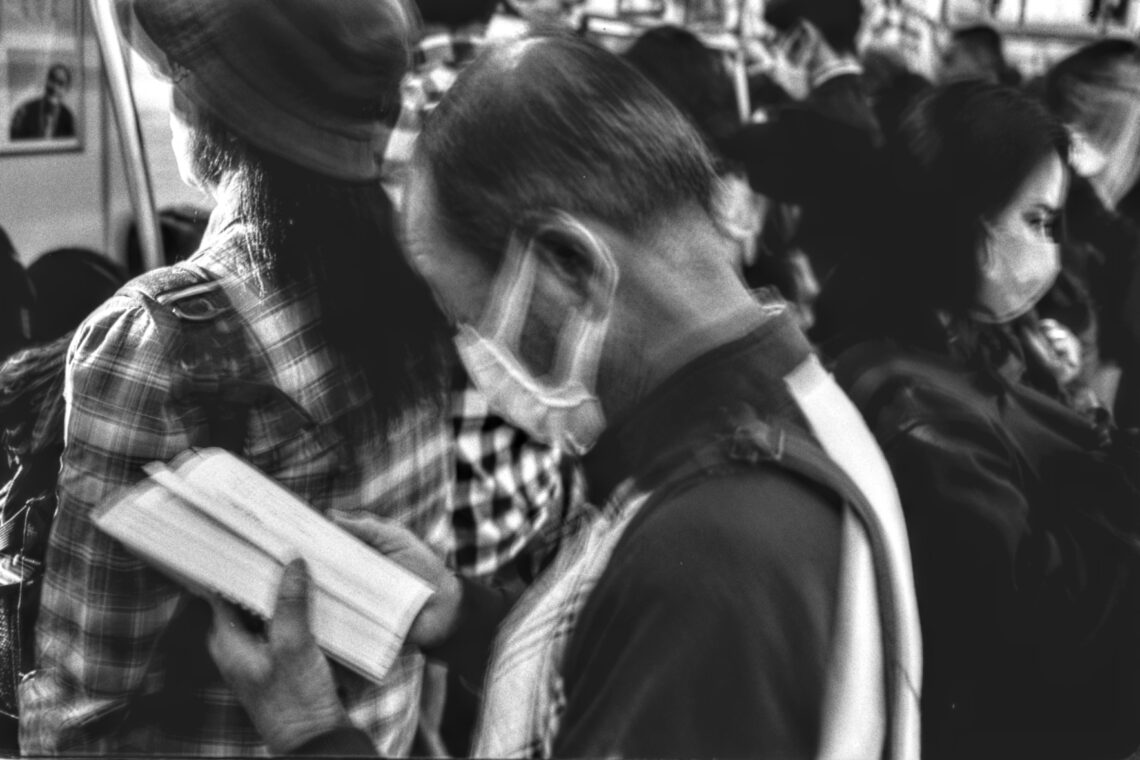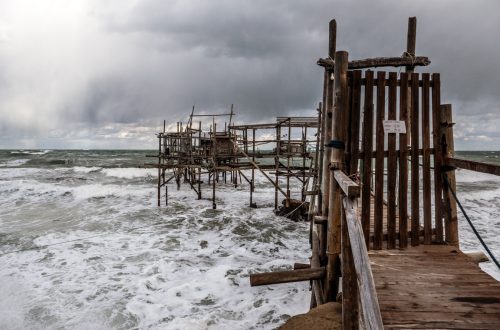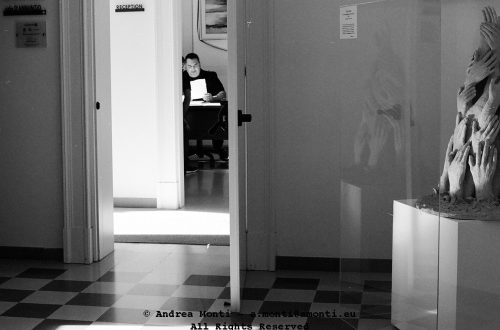
Isolation in Public Spaces
Tokyo’s subway is rarely empty, yet in the press of bodies and the blur of passing stations, solitude often asserts itself. This frame was made with a Nikon 35TI, paired with Ferrania Orto, whose orthochromatic palette brings a certain austerity to the scene. The absence of red sensitivity pulls skin tones toward pallor and renders signage and advertising in a flatter, more subdued register — perfect for distilling a moment that’s more about psychological distance than geographical setting.
The composition is anchored on a single figure, set against the geometry of the carriage interior. Lines from windows, doors, and grab rails intersect in a way that almost corrals the subject, making their isolation more palpable. The Nikon’s 35mm lens, sharp but not clinical, allows for a faithful rendering of detail without stripping away atmosphere.
Exposure was a balancing act. The subway’s mixed lighting — fluorescent with the occasional intrusion of daylight between stations — is unforgiving, but the Ferrania Orto holds shadow detail with surprising grace. Highlights are tamed, never flaring out, though the grain is more assertive in the darker areas. Here, it works to the image’s advantage, adding a tactile quality that smooth digital files often lack.
It’s a quiet photograph, almost stark in its tonal range, but that restraint is part of its pull. The subway here is not presented as a frenetic rush of commuters but as a liminal space, where an individual’s inner world can remain untouched by the crowd around them. In that respect, the image isn’t about absence, but about the persistence of one’s own mental territory amidst the collective hum.




